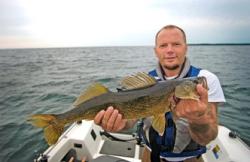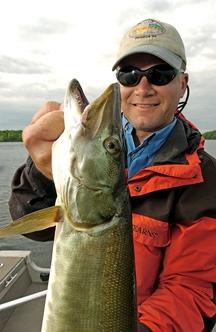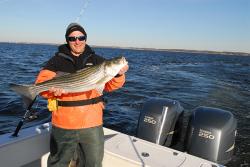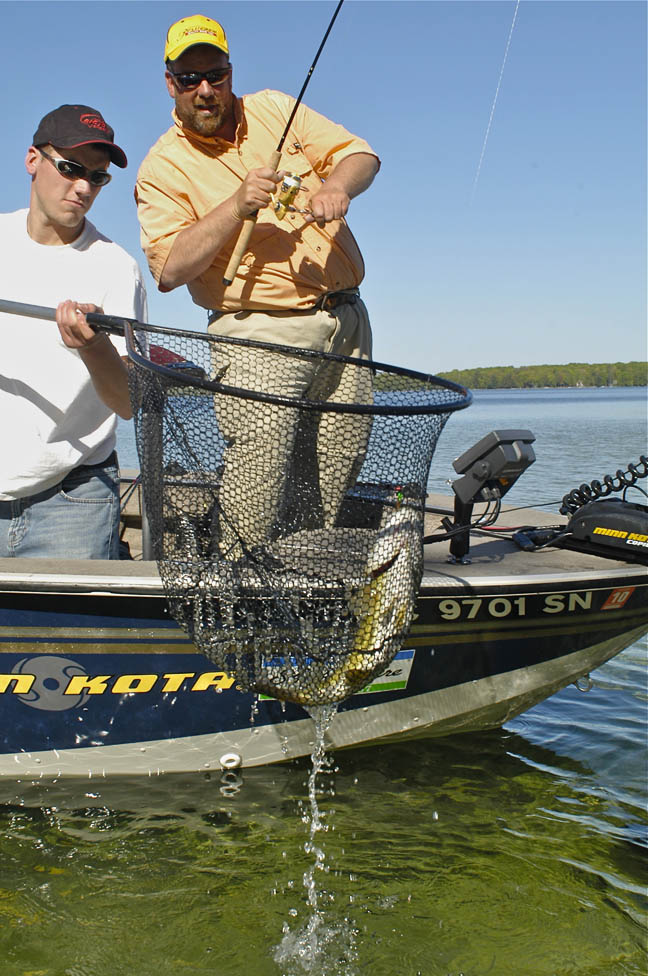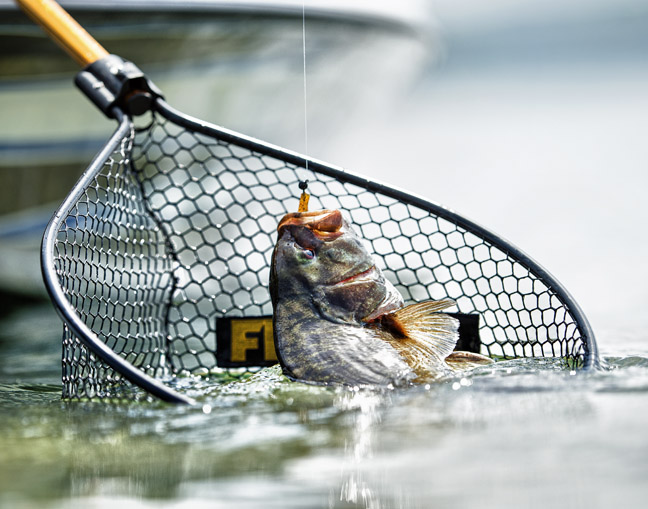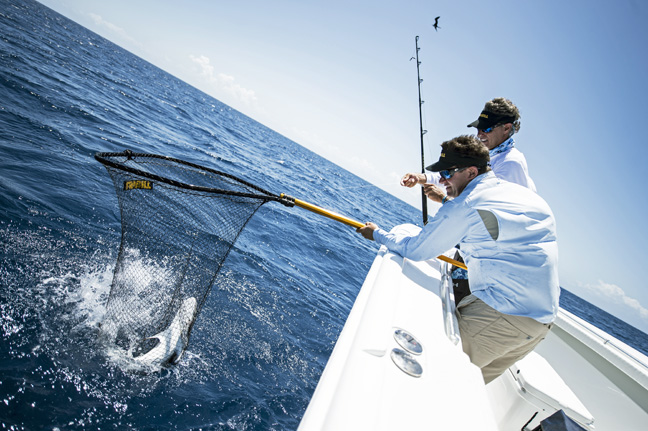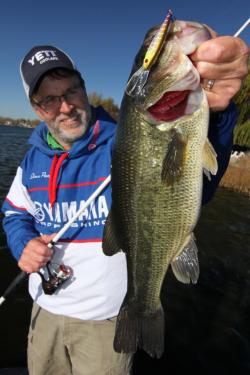Michigan DNR fisheries experts offer opening-day tips
(Michigan’s DNR Biologists offer these tips for their home state, but they’re also very useful for anglers fishing early spring anywhere in the Midwest in the next month. Editor)
from The Fishing Wire
Fishing may be a 12-months-a-year sport in Michigan, but there’s little doubt that the last Saturday of April is one of the biggest days of the year for anglers. It marks the opening day of trout fishing, statewide on more than 80 percent of the state’s trout streams, as well as the season opener for walleye, pike and muskellunge on the inland waters of the Lower Peninsula.
Like many anglers, a fair number of Department of Natural Resources fisheries personnel will take to lakes and streams very soon. Here’s what some of them have to say about opening-weekend opportunities:
Trout:Mark Tonello, a fisheries biologist out of Cadillac and a trout aficionado, says anglers must rid themselves of preconceived notions.
“Don’t pigeonhole yourself into one river,” Tonello said. “What if you get up there and the river you chose is running 4,000 feet per second and all mud? You might want to look at smaller waters, further upstream, where it may be clearer.
“And use all weapons available,” he continued. “A lot of good anglers I know go ready for anything. If there are hatches going off, they’ve got their fly rods and are ready to match the hatch. But if there’s no hatch, they’re ready to throw spinners. And if that’s not working don’t be afraid to try bait.”
Tonello said anglers shouldn’t be afraid of competition.
“Opening weekend tends to be one of the busiest weekends of the year, but we have so much water, you can find places to fish,” he said. “A good hint is to start with our trout regulations maps that are all color coded – you can catch trout from any of those streams.
“And don’t be afraid to contact the local biologist,” Tonello said. “As a biologist, those are some of my most enjoyable phone calls, when someone calls and says, ‘I’m heading up to Cadillac, can you give me tips on where to fish?'”
WalleyesWalleye anglers will likely be spread between rivers and lakes and anglers should wait until right before opening day to decide where to fish.
“Last year there were a lot of fish still in the river for the opener,” said Tim Cwalinski, a fisheries biologist in Gaylord. “This year we’re warming up a little more quickly and we didn’t get as much snow, so the fish may be further along this spring than last spring. On our big lakes – Hubbard, Grand, Long, Burt and Mullet, for instance — there are going to be fish in close, near the river mouth, but your best bet is probably going to be fishing really, really slowly. Trolling won’t cut it.
“If they’re still spawning, they’ll be in rocky, cobble areas in 2 to 10 feet of water,” he continued. “If they’ve finished spawning they’ll be out deeper. Males hit the spawning grounds first and stay on the grounds longer; there are fish there all the time, but there are aggressive fish there only part of the time. So don’t be afraid to fish well into evening. That’s what I’ve found on some of these big lakes.”
Fisheries biologist Jim Baker of Bay City – whose management unit includes the tributaries that feed Saginaw Bay – says a lot will depend on what happens weather-wise the couple of days immediately preceding the opener.
“If you get a big rain and the rivers get high and muddy, it can be hard to catch fish,” Baker said. “But we think the fish will be spawning late because it was so cold, so there should be a lot of fish left in the river when the opener arrives. Most of the guys will be vertical jigging with jigs, baited either with minnows or twister tails, but after the crowds dissipate, we know some guys troll up and down the rivers with Rapalas and they do pretty well.”
Muskellunge and Pike:Muskellunge enthusiast Don Barnard, a fisheries technician out of Bay City, says the colder water around opening day means anglers should downsize their baits.
“I use smaller baits in the spring than what they use in summer and fall,” he said. “In fall we use 10- or 12-inch baits. The advice is to scale that down to about 8 inches or less in the spring. I use a smaller bucktail or twitch bait, 6 to 7 inches.
“A lot of anglers like to sight fish for spawning fish,” Barnard continued. “Spot them and cast to them.”
Barnard said he often fishes reservoirs and creek mouths.
“Fish the north end of the lake where it gets more sunlight and it warms up a little faster,” he said. Fish 6 to 8 feet of water, not any deeper than that. The fish are going to be up trying to sun themselves.”
Pike anglers should follow the same strategy.
“We like to fish them shallow around the opener,” said Jody Johnston, a fisheries technician out of Crystal Falls. “A lot of times they’re up very shallow – I wouldn’t be afraid to throw up in 2 feet of water. That’s where some of those nicer fish hang out, especially if you get a wind that is blowing the warm water into the shallows.”
Gary Whelan, the fisheries biologist who runs the DNR research team out of Lansing, says pike anglers should use bass techniques, only more so.
“Use the biggest flies and lures you’ve got,” he said. “I like to fish rivers, and pike will take large streamers like you use for bass – deceivers, Clouser minnows, zonkers – something that looks big and offers a lot of motion. But make sure you use some sort of shock tippets or heavy leader.
“If you’re casting lures, use spinnerbaits or body baits like Rapalas – the biggest ones you’ve got.”
To get more tips and information – including Family Friendly Fishing Waters, the June 13-14 Summer Free Fishing Weekend, and season rules and regulations – visit www.michigan.gov/fishing.

